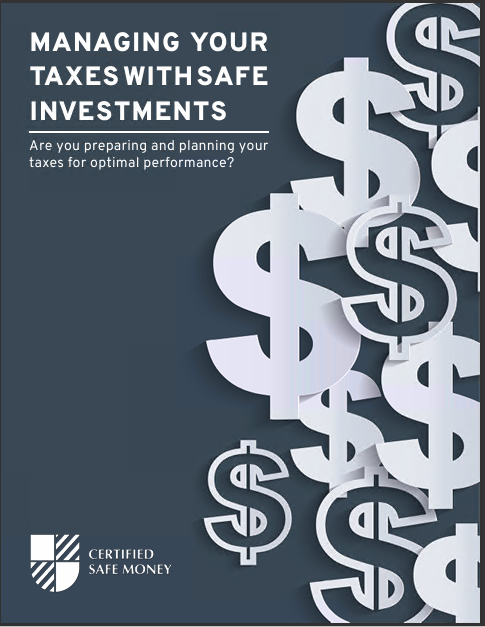Key Takeaways
-
Fixed index annuities offer safety but often come with unexpected drawbacks like limited growth and high fees.
-
Thoroughly understanding all terms, including surrender charges and participation rates, is essential before choosing this investment option.
Safety with Strings Attached: Is It Worth It?
If you’re considering ways to safely grow your money without facing the uncertainty of the stock market, fixed index annuities (FIAs) might have caught your attention. They promise a tempting combination of protection from market downturns and potential growth linked to market gains. Sounds good, right? Well, not so fast—there might be some pitfalls you haven’t considered yet.
Let’s dive into five significant downsides of fixed index annuities that are often overlooked. Understanding these can help you make a smarter financial decision before locking yourself into a long-term commitment.
1. Limited Growth Potential: Not As Good As It Seems
The Trade-Off for Safety
Fixed index annuities advertise themselves as the best of both worlds—growth and safety. However, that safety comes at the cost of limited growth potential. Your returns are typically linked to a market index like the S&P 500, but here’s the catch: your gains are capped. If the market skyrockets, your FIA won’t fully participate. Instead, you’ll receive only a fraction, thanks to what’s called a participation rate.
For instance, your annuity might have a participation rate of just 50% to 80%, meaning if the market increases by 10%, you only gain 5% to 8%. Over several years, especially during strong bull markets, this cap severely restricts your earning power.
How Inflation Eats Away Your Returns
Considering inflation averages around 2-3% annually, your real returns from an FIA could be minimal, even negative, after accounting for inflation. If your annuity only provides modest returns due to participation rates, you may struggle to grow your money enough to keep pace with rising living costs over the long run, particularly in retirement.
2. Hidden Costs Can Quietly Drain Your Money
Fees, Fees, and More Fees
On the surface, fixed index annuities may appear straightforward, but underneath lies a web of hidden fees. Common fees include rider charges, administrative expenses, and mortality fees. While you might hear your agent mention these costs briefly, it’s easy to underestimate their long-term impact.
Annual fees for additional benefits, such as income guarantees or death benefit riders, can range from 0.5% to 2% annually. Over time, these seemingly small percentages compound, significantly reducing your investment returns. Always request a clear breakdown of these costs and calculate their cumulative effect over your investment period.
Opportunity Cost: What You’re Missing Out On
Remember, every dollar spent on fees is a dollar that could have been growing elsewhere. Compared to low-cost index funds or other diversified investment options, your FIA fees might appear excessively high, eroding your returns substantially over 10, 20, or even 30 years.
3. Surrender Charges Can Trap Your Money for Years
Understanding the Surrender Period
One of the least talked about but most impactful downsides of fixed index annuities is the surrender charge period. These annuities often come with hefty surrender charges that lock your money in for an extended timeframe—commonly ranging from 5 to 12 years or even longer.
If life throws you an unexpected financial curveball—like needing funds for medical expenses, home repairs, or family emergencies—you’ll pay steep penalties to access your money during the surrender period. These penalties typically decline over time, but initially, they can be as high as 10% or more of your investment.
Lack of Liquidity: Can You Afford to Wait?
Given the restrictive nature of surrender periods, it’s critical to assess your liquidity needs carefully. If there’s even a slight chance you’ll need quick access to your funds, an FIA might not be your best bet.
4. Complexity That Could Lead to Misunderstanding
Difficult to Fully Understand
Financial products can be complicated, but fixed index annuities rank among the trickiest. Understanding the full details of participation rates, cap rates, spreads, and rider conditions requires extensive financial literacy. If you’re not careful, you might misunderstand how your FIA truly works, leaving you disappointed later when the returns don’t match your expectations.
Misleading Marketing Practices
Marketing pitches for FIAs often highlight safety and guaranteed minimum returns without emphasizing the limitations and complex conditions that determine actual payouts. While the principal protection feature is genuine, oversimplified marketing could obscure essential details, causing misinformed decisions.
5. Limited Benefit for Tax-Deferred Growth
Annuities and Tax Deferral: Not Always Advantageous
Fixed index annuities offer tax-deferred growth, meaning you won’t pay taxes on gains until withdrawal. While tax deferral sounds beneficial, it might not always work to your advantage. When you eventually withdraw the money—often in retirement—earnings will be taxed at your ordinary income tax rate rather than the typically lower capital gains rate.
For some investors, particularly those in higher tax brackets, deferring taxes could lead to greater tax burdens later, potentially offsetting the perceived benefits. Furthermore, annuity withdrawals can increase your taxable income, potentially pushing you into higher tax brackets and even impacting Social Security taxation.
Better Tax-Efficient Options Exist
Tax-efficient alternatives such as Roth IRAs or specific tax-managed investment accounts might offer better overall tax savings without the complexities and drawbacks of FIAs. Assessing your tax situation carefully with a tax advisor can help you identify whether an FIA’s tax deferral genuinely benefits your long-term financial strategy.
Weighing the Pros and Cons: Your Next Steps
Understanding the complexities of fixed index annuities, including their hidden costs, surrender periods, limited returns, complexity, and potential tax pitfalls, is essential before investing your hard-earned money. Despite their attractive safety feature, these significant downsides should prompt a cautious and well-informed decision-making process.
Ask yourself:
-
Do you fully grasp how the participation rates and caps will impact your earnings?
-
Have you calculated the long-term impact of fees and surrender charges?
-
Are you comfortable with limited access to your funds for an extended duration?
Before committing, thoroughly compare fixed index annuities with other investment options, ensuring the choice aligns with your financial goals, risk tolerance, and retirement needs.
With careful consideration and a complete understanding of these potential downsides, you’ll be better positioned to choose investments that genuinely benefit your financial future.












